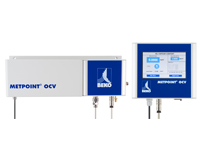 The Food and Beverage Grade Compressed Air Best Practice Guideline 102 is available from the British Compressed Air Society and contributing members such as BEKO TECHNOLOGIES. This best practice guideline has been produced because compressed air is a utility and as such its provision is normally included in the pre-requisite programme rather than the HACCP process. There was also an opportunity to review and update the guideline.
The Food and Beverage Grade Compressed Air Best Practice Guideline 102 is available from the British Compressed Air Society and contributing members such as BEKO TECHNOLOGIES. This best practice guideline has been produced because compressed air is a utility and as such its provision is normally included in the pre-requisite programme rather than the HACCP process. There was also an opportunity to review and update the guideline.
The talking points have not changed much because safety has to be fundamental but there are some issues that those responsible within the Food and Beverage Industry should take note of. The first one is that the “Competencies” section, under provision of equipment, the staff providing the compressed air products or complete system should have a minimum of 5 years training and on the job experience. This makes sense and BEKO TECHNOLOGIES welcome such stipulations. In fact any person from BEKO TECHNOLOGIES attending sites to discuss products and systems will have at least 10 years experience. There is of course an extra burden on the customer and client in establishing the bona fides of any person attending site for the purpose of providing compressed air equipment.
Much of the document focuses on the fact that the process always defines the purity required but if there is no specification from the machinery supplier or the Food and Beverage Industry client, then this guideline should be followed. There is importance attached to the correct installation in order to maintain air purity, together with the provision of standby equipment to allow maintenance and documentation as to what protection was taken during any periods of bypassing.
The quality of compressed air is as before defined by ISO 8573-1 (2010) where levels of particles, water content and total remaining oil content i.e. liquid, aerosol and vapour are specified. For the user there are again 2 categories of compressed air usage; direct contact and indirect contact. Direct contact is where there is direct impingement onto the product, ingredients or packaging. Indirect is the situation where pneumatic equipment is present and the exhausted compressed air from cylinders, actuators etc are present in the production or packaging areas.
The air treatment requirement for the main contaminants has been adjusted to reflect changes in ISO 8573:2010 and the light of experience with the previous version of the guide. The particle class chosen for both direct and in-direct contact has been relaxed to mirror easily available filtration. The humidity levels identified have been chosen to help with the control of microbiological contaminants and will require the use of different drying techniques. There has also been a relaxation of oil levels for in-direct contact applications.
There is a requirement for logging data and setting frequency of measurement and again here the process or equipment used should define actions or the guideline of 2 measurements per year followed. Today it is very easy to constantly monitor all the key parameters in a compressed air system and BEKO TECHNOLOGIES have a device METPOINT BDA which will monitor 12 analogue or digital inputs which could cover the guidelines. Data is available in many formats from connection to BMS to SMS to selected phones plus many other options.
Dewpoint is simple but particle counting and total oil are not frequently observed. For oil, BEKO TECHNOLOGIES have a solution which will constantly measure the remaining oil vapour content in compressed air and as above store data and relay in which manner is preferred. The METPOINT OCV is installed in an increasing number of Food and Beverage companies because impact tubes are only able to measure to Class 2 for oil and therefore provide part of the compressed air solution. METPOINT OCV will go down to 0.003mg/m³ and provides reassuring data and sometimes frightens those who automatically expect the air from an oil free compressor to have a Class 0 reading. This is frequently not the case and is no fault of the compressor but the intake air will contain hydrocarbon in high concentrations in industrial locations. The other option to measure occasionally by sampling and sending to specialist labs is permissible but one can only imagine what the consequences of a negative result would really be...effect on brand reputation, product recall and certainly very significant cost compared to the BEKO TECHNOLOGIES solution of permanent monitoring.
Company: BEKO Technologies Limited, 2 & 3 West Court, Buntsford Park Road, Bromsgrove, Worcestershire, England, B60 3DX.
Tel: 01527 575778. Fax: 01527 575779.
E-mail: This email address is being protected from spambots. You need JavaScript enabled to view it. | Website: www.beko-technologies.co.uk

